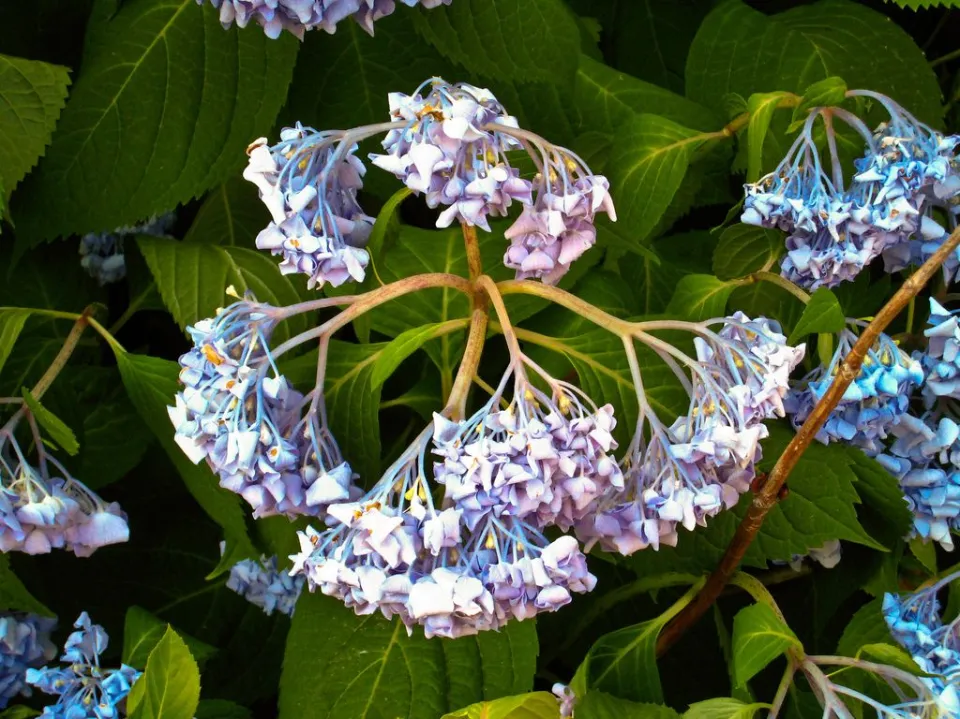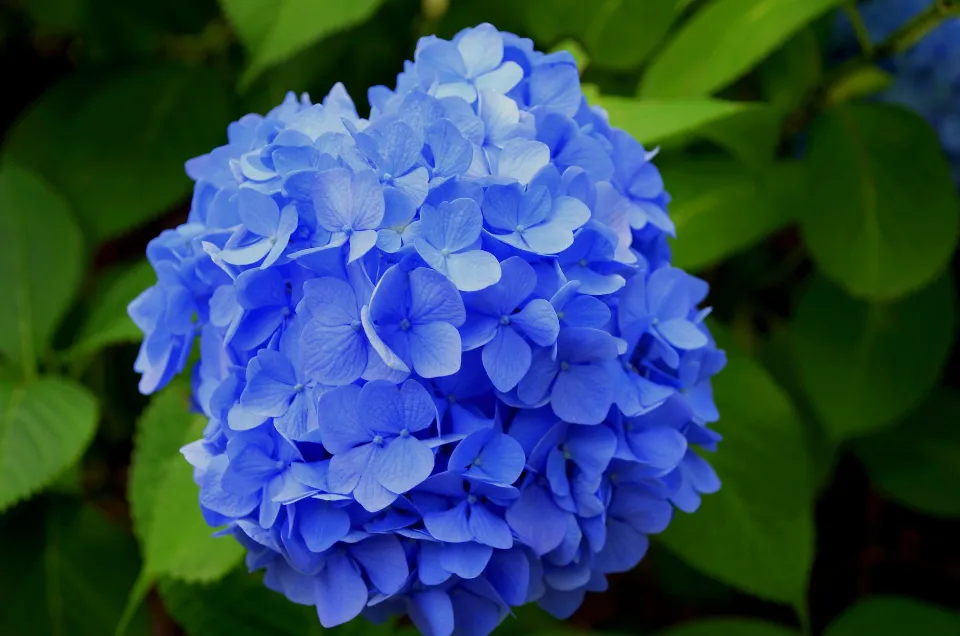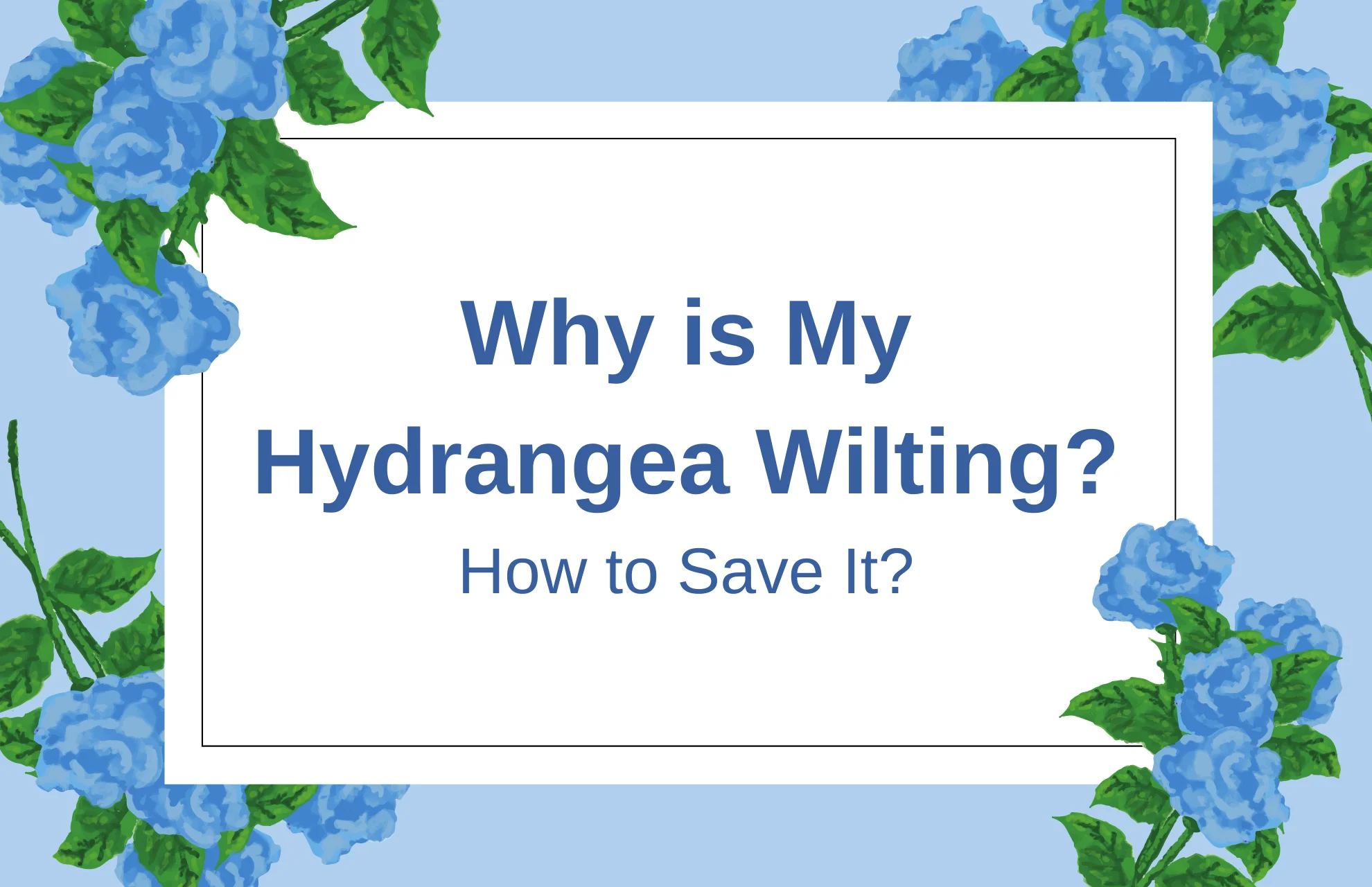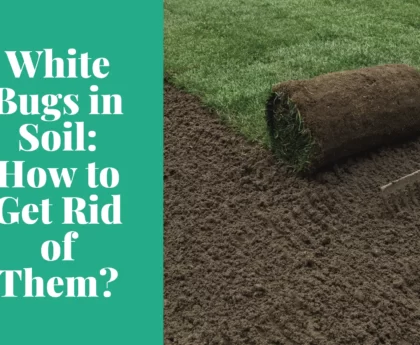You can use the solutions to stop your hydrangea from wilting after reading up on the causes.
Your hydrangea is wilting either because the soil is too dry, it is receiving too much sun, or there is too much nitrogen fertilizer applied. To prevent drooping and maintain health, hydrangeas prefer dappled light, consistently moist soil, and slow-release fertilizer.
Read on to learn about ways of managing wilting hydrangea plants.
Read More:
Water Stress
To support their big leaves and flower clusters, hydrangeas need consistently moist soil. They quickly begin to wilt in dry soil. Water the hydrangea when the top inch of soil feels dry, checking the soil moisture every day.
Water until the excess runs off the bottom of the pot to ensure that the soil is moistened all the way to the top. Avoid overwatering, and after each irrigation, empty the collected water from the drip tray to prevent root rot, which can also cause wilting due to soggy soil.
Too Much Sunlight
The leaves don’t droop and stay healthy thanks to the strong sunlight. Lack of sunlight can result in reduced flowering, wilt, and unhealthy, pale foliage. Direct sunlight has the potential to burn or hasten the drying out of the foliage.
Alternatively, provide the pot with bright, indirect sunlight by positioning it close to a window that faces south or in a location where light is reflected off of a sheer curtain. Give the hydrangea roughly six hours of sunlight each day.

Temperature Needs
Rapid moisture loss happens in heat. If the temperature is too high, the flowers lose petals or drop, and the foliage starts to wilt. Hydrangeas thrive in temperatures between 65 and 75 degrees Fahrenheit, which is typically found in most homes. However, they thrive and resist wilting when placed in a location between 50 and 60 degrees F at night.
In order to further prevent wilting when temperatures exceed 80 degrees Fahrenheit, bring outdoor potted plants inside. Freezing temperatures also cause wilting and can even kill some hydrangea varieties.
Over Fertilizing
For a flowering hydrangea plant to grow successfully and healthily, organic compost or aged manure must be added. However, too much fertilizer will harm the plant rather than aid in its growth. In general, nitrogen in the soil where hydrangeas are grown can be problematic.
So, with excess nitrogen levels in the soil, the plants develop droopy leaves and begin to wilt. Over time, the plant stem is thin, preventing them from supporting the flowers.
If the soil is too nitrogen-rich, it is fairly simple to determine. To determine how saturated the soil is and how to rebalance the soil by adding potassium and phosphorus, you can use a soil pH testing kit.
Despite the fact that fertilizer is beneficial for your plants, hydrangeas don’t require much of it. Test the soil to see if it has enough fertilizer before planting your hydrangea. Otherwise, amend the soil with an adequate amount of organic compost and cover it with pine straw, leaf mulch, or both each year.
Flower Growth
A plant’s entire structure may be harmed by the wilting and bending of delicate branches that can result from excessive flower growth. This may occur for no apparent reason, as a result of merely heavy flowers, or as a result of exposure to extremely harsh weather conditions.
Pruning is the quickest way to solve this issue. You can also remove several flower buds early in the season before blooming.
As a result, the plant can internally thin for better growth. However, if the issue has already become more serious, you can stake your hydrangea plant with a companion plant, such as peonies, for additional central support. Just tie the two plants together and use a fence post to support them.
Transplanting Them
Wilting can also result from transplanting recently planted hydrangeas. In order to propagate plants, you typically move them from a planter, pot, or other small containers to your garden or a larger pit. This process is known as transplanting.
The plant’s delicate roots could accidentally be destroyed during transplantation, which would hinder its ability to efficiently absorb water.
Other reasons why transporting may cause hydrangeas to wilt may be due to the different soil composition and moisture levels in the planter/pot/small container and the larger pot/garden.

If you suspect that your roots have been harmed, keep watering them deeply to compensate for their poor water absorption and to gradually encourage new root growth.
You should take extra precautions when transplanting and try to keep the roots as moist and wet as you can in order to avoid damaging the roots.
Inadequate Growing Conditions
Poor growing conditions can also contribute to hydrangeas wilting. For example, hydrangeas plants love water! Planting them in small pots is therefore not a good idea because the water in those pots dries up quickly. Even though you keep watering them frequently, your plant may still be wilting because of this.
Your hydrangeas’ access to water and nutrients may be restricted by where you plant them, which will make them wilt.
A large pot with a minimum diameter of 16 inches should be used in place of a small one to allow for maximum moisture and water retention. Additionally, check that the pots have holes for the best soil and root aeration.
More harm than good may result if you leave the plants in stagnant water. Avoid planting your plant close to invasive plants or bigger trees that would compete for water, moisture, and nutrients in the soil if you want to make sure it has access to enough water and nutrients.
How to Save Newly Planted Hydrangea from Wilting?

- Protect new hydrangeas from the sun.
- Water every three days.
- Use compost, leaf mold, or well-rotted manure mulch around the plant to conserve moisture.
For newly planted hydrangeas to recover, it is important that you protect the plant from the intense sun. While some sunlight is helpful for promoting flowers at this stage of planting, it is likely to worsen the soil drying out and drooping of the leaves.
Provide temporary shade for newly planted hydrangeas whilst they get established for around three weeks.
The hydrangea may have been grown in a temperature-controlled greenhouse under very specific conditions, so it may take some time for the hydrangea to get used to the garden soil and stop drooping leaves.
To keep the soil moist and protect it from the sun, always give the soil around the hydrangea a good soak and apply mulch to the top of the soil. Water as often as necessary—typically three times per week—to keep the soil moist, but make sure the soil doesn’t get soggy as this could lead to other issues like root rot.
If the soil is moist and the plant is shielded from the sun, the leaves of your hydrangea may recover in the cooler evening hours, depending on how dehydrated it is.
Conclusion
Your hydrangea stems may become weak and touch the ground if they are subjected to prolonged full sun exposure and dry conditions. Your hydrangea plant is trying to tell you that it’s not doing too well and needs your attention by drooping and wilting.
Fortunately, hydrangeas can withstand almost any situation without wilting with the right care and growing conditions.
FAQs
How Do I Know If My Hydrangea is Overwatered?
If you overwater your hydrangea, there are a number of signs that will let you know. The most typical symptom is the yellowing of the leaves, which eventually drop off. On your plant, you’ll also notice fewer growing flowers and flowers with irregular shapes. Browning of the leaf margins and the development of mold or fungi on the plant or in the soil are additional symptoms.
Will Hydrangeas Come Back After Wilting?
But hydrangeas are also one of the few plants that can draw moisture in through their florets, so it’s possible to perk up wilted blooms by completely submerging them in water and letting them sit for a few hours to rehydrate.









